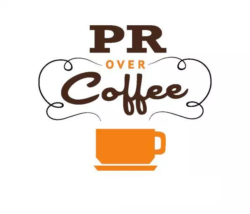What’s the Difference Between Earned, Paid and Owned Media?
In communications, the phrases “earned media,” “owned media,” and “paid media,” are often used to describe the three main methods of content development and marketing. It’s...
Filter by Category

In communications, the phrases “earned media,” “owned media,” and “paid media,” are often used to describe the three main methods of content development and marketing. It’s...
Posted by Weslie Oeftering

These days, machine learning is everywhere. From Pixar movies to Siri and your Facebook News Feed, artificial intelligence has become a large part of our everyday lives. What does...
Posted by Weslie Oeftering

Having a large Rolodex and generally being good at talking to people will only get you so far when it comes to earning media coverage for your clients. As a PR pro, it’s less...
Posted by Weslie Oeftering

Are you an aspiring Public Relations professional looking for an opportunity to advance your skills and career with a creative agency? We are looking for a hardworking PR Intern...
Posted by provercoffee

There are few things more enjoyable to a PR professional than getting a small retailer into the local news. Be it a TV interview or a write-up in the local newspaper or an online...
Posted by Weslie Oeftering

Congratulations, you’re about to start a new business! Or, maybe you’re just thinking about it and still putting all the pieces (i.e. the budget) together. No matter where you are...
Posted by Weslie Oeftering

Facebook was founded almost 15 years ago. Twitter came a short time later in 2006. Despite having over a decade to master communication on each of these platforms (and all of the...
Posted by Weslie Oeftering

I would love to be able to say that when it comes to executing public relations campaigns you can just jump right in. You can, but you shouldn’t. As is the case with almost...
Posted by Weslie Oeftering

As a PR student, whenever I see my family, they inevitably always ask me: “So, what is PR, anyway?” It’s a great question because not everybody knows what PR stands for, let alone...
Posted by Weslie Oeftering

2018 was an exciting year for the PR industry. There were data breaches, social media crises, CEOs lacking self-awareness, artificial intelligence, and an increasing focus on...
Posted by Weslie Oeftering

In communications, the phrases “earned media,” “owned media,” and “paid media,” are often used to describe the three main methods of content development and marketing. It’s easy for an untrained newbie, or even a seasoned business owner, to get mixed up in all the jargon. Although earned, owned, and paid media may sound similar, it is important for anyone looking to strengthen their marketing and PR muscles to understand the differences between them. This way, you can successfully integrate them into your marketing mix.
Earned media is exposure of an organization or company through online word-of-mouth. Mentions of a company in online articles from media outlets like TechCrunch or even Buzzfeed (in the form of a quote from an executive or literally just a mention), blog posts, reviews of a company itself or their specific products (or its great customer service) are all forms of earned media. For instance, mentioning TechCrunch in this blog post is a form of earned media for TechCrunch.
The most important component of earned media is that it is free – at least to the organization being mentioned. Although, it may cost the media outlet doing the mentioning some money to publish an article because they may have to pay for the domain they are publishing on, or pay the author, etc.
Paid media is paying to advertise your company’s products or services on a third party site or search engine. There are three main types of paid media: Pay-per-click (PPC), display ads, and influencers.
PPC ads are when the third party you are advertising on charges you based on how many times the ad is clicked. This third party could be Google, who you are paying to ensure that an ad appears as the top search result when certain keywords are used; or it could be a social media site like Facebook, Twitter, or Instagram.
Display ads (sometimes called banner ads) are ads that appear at the top, side, or bottom of a website. For example, when you put some items in your Amazon cart but don’t check out before leaving the site, you might see a display ad for Amazon on a different website featuring the exact items that are currently in your Amazon cart.
Influencers are social media personalities that you have paid to advertise your product directly on one or more of their social media accounts. Examples of influencers are the Kardashians, former Bachelor/Bachelorette contestants, hosts of popular podcasts and Instagram-famous dogs. Influencers are usually paid per-post, but some companies pay their influencers a flat, upfront fee for weekly or monthly posts.
The more famous the influencer, the more money it costs to partner with them. At the top of the influencer food chain is Kylie Jenner, who charges a cool $1 million (about $108 per follower) to feature a product on her Instagram. However, there are many, many influencers out there who charge much more reasonable rates for businesses that are just starting out. As such, this advertising method has proven successful for many brands who match their product to the right influencer.
Owned media is the most self-explanatory of our three media types. It is any online entity that an organization owns and therefore has full control over. This means that it approves any and all content that appears in these spaces. This includes its website(s), any social media accounts, and blogs.
You should invest in making your owned media sites worthwhile places to visit. It is all too easy to disappoint a potential customer once they reach your site through your various earned and paid media efforts. It’s always better to live up to the hype.
About Weslie Oeftering: Weslie is a student at The University of Texas at Austin and Swyft’s resident PR and marketing intern. She supports clients with social media, blogging, and tech PR activities. Swyft is a PR and marketing agency with offices in Austin, Houston, and Denver that provide services for tech companies all around the world who are seeking rapid, sustained growth. Some of their services include content marketing, social media strategy, as well as ad buys, email marketing, and media relations.

If you’re just starting out, or if you’ve been too busy with other aspects of your business to think about marketing, you may be considering outsourcing your marketing efforts to...

So you’ve recently started your business and have been working hard to promote it. You’ve created a website because it is 2017 and without one your company wouldn’t survive for...